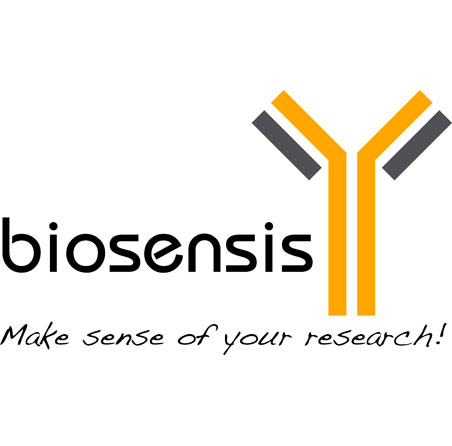Sequestosome 1, Rabbit Polyclonal Antibody
As low as
US$317.00
Only %1 left
Catalog Number
R-162
- Product Name Sequestosome 1, Rabbit Polyclonal Antibody
- Product Description Rabbit anti-Sequestosome 1 Polyclonal Antibody (Unconjugated), suitable for IHC-Frozen.
- Alternative Names Phosphotyrosine-independent ligand for the Lck SH2 domain of 62 kDa; ubiquitin-binding protein p62; EBI3-associated protein of 60 kDa; p60; EBIAP; SQSTM1; ORCA; OSIL
- Application(s) IHC-Frozen
- Antibody Host Rabbit
- Antibody Type Polyclonal
- Specificity The specificity was confirmed by immunohistochemical analysis on paraffin embedded human brain. This antibody is expected to recognise p60 in mouse, rat and bovine.
- Species Reactivity Bovine, Human, Mouse, Rat
- Immunogen Description Peptide IGAALDTIQYSKH corresponding to the C-terminal part of human Sequestosome 1 (aa: 424-436) conjugated to the Blue Carrier Protein has been used as the immunogen.
- Conjugate Unconjugated
- Purity Description Whole serum
- Regulatory Status For research use only.
Product Info
- Product Description Rabbit anti-Sequestosome 1 Polyclonal Antibody (Unconjugated), suitable for IHC-Frozen.
- Application(s) IHC-Frozen
- Application Details IHC. A dilution of 1:500 to 1: 5000 is recommended. Biosensis recommends optimal dilutions/concentrations should be determined by the end user.
- Target Sequestosome 1
- Specificity The specificity was confirmed by immunohistochemical analysis on paraffin embedded human brain. This antibody is expected to recognise p60 in mouse, rat and bovine.
- Target Host Species Human
- Species Reactivity Bovine, Human, Mouse, Rat
- Antibody Host Rabbit
- Antibody Type Polyclonal
- Antibody Isotype Mixed
- Conjugate Unconjugated
- Immunogen Description Peptide IGAALDTIQYSKH corresponding to the C-terminal part of human Sequestosome 1 (aa: 424-436) conjugated to the Blue Carrier Protein has been used as the immunogen.
- Purity Description Whole serum
- Format Lyophilized
- Reconstitution Instructions Spin vial briefly before opening. Reconstitute in 100 µL sterile-filtered, ultrapure water. Centrifuge to remove any insoluble material.
- Storage Instructions After reconstitution keep aliquots at -20°C for a higher stability, and at 2-8°C with an appropriate antibacterial agent. Avoid repetitive freeze/thaw cycles. Glycerol (1:1) may be added for an additional stability.
- Batch Number Please see item label.
- Expiration Date 12 months after date of receipt (unopened vial).
- Alternative Names Phosphotyrosine-independent ligand for the Lck SH2 domain of 62 kDa; ubiquitin-binding protein p62; EBI3-associated protein of 60 kDa; p60; EBIAP; SQSTM1; ORCA; OSIL
- Uniprot Number Q13501
- Uniprot Number/Name Q13501 (SQSTM_HUMAN)
- Scientific Background Sequestosome 1 is an adapter protein which binds ubiquitin and may regulate the activation of NFKB1 by TNF-alpha, nerve growth factor and interleukin-1. It may regulate signaling cascades through ubiquitination and may also be involved in cell differentiation, apoptosis, immune response and regulation of K(+) channels. It is present as a homooligomer or heterooligomer and localises to the cytoplasm, late endosome and nucleus. In cardiac muscles it localises to the sarcomeric band. It accumulates in neurofibrillary tangles and in Lewy bodies of neurons from individuals with Alzheimer and Parkinson disease respectively. It is also enriched in Rosenthal fibers of pilocytic astrocytoma and in liver cells it accumulates in Mallory bodies associated with alcoholic hepatitis, Wilson disease, indian childhood cirrhosis and in hyaline bodies associated with hepatocellular carcinoma. Sequestosome 1 is ubiquitously expressed and to date, there are 2 named isoforms produced by alternative splicing. Defects in sequestosome 1 cause sporadic and familial Page disease of bone (PDB). This is a metabolic bone disease characterised by focal areas of increased and disorganised bone turn-over due to activated osteoclasts.
- Shipping Temperature 25°C (ambient)
- UNSPSC CODE 41116161
- Regulatory Status For research use only.

 1800 605-5127
1800 605-5127 +61 (0)8 8352 7711
+61 (0)8 8352 7711
